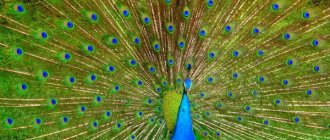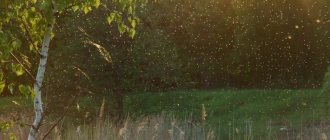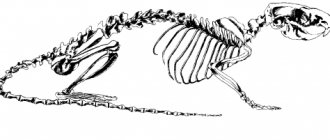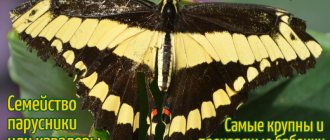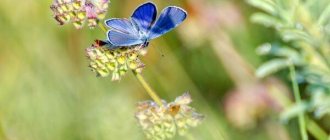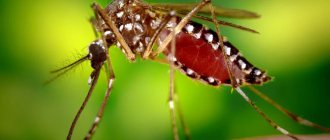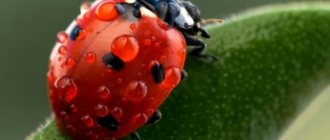Moths are a pest that enters the house and causes a lot of trouble for the owners. Not only clothes made of wool or fur suffer from voracious insects; depending on the type of pest, food and even furniture can be at risk.
To successfully fight moths, you need to know about the stages of insect development, since the main danger is not the adults, but the larvae.
Description and characteristics of the insect
Moths are lepidopteran insects. There are more than 2,000 species in the world, representatives of which are characterized by small size, narrow wings, and nondescript camouflage coloring.
Almost all types of moths begin to become active at dusk. Adults do not eat, but subsist on nutrients that were accumulated during the caterpillar stage. But the larvae are very voracious. They cause the main damage to plants, products or tissues (depending on the type of moth).
Appearance of a moth
Despite the diversity of species, outwardly all members of the family are similar to each other. An adult food or clothes moth looks like a moth ranging in size from 0.5 to 1.3 cm. The color varies from gray to brown, the wings have a slight pearlescent tint.
If you look closely, you can distinguish food moths from clothes moths both by size and color. The dress one is slightly larger, and the color is closer to golden brown. The food is smaller, and the shade of the wings is darker, brownish-gray.
Varieties
Lifespan
How long a moth lives depends on environmental conditions and the type of pest. On average, the lifespan of an adult is from 1 to 4 weeks. The larval stage, during which insects actively feed and cause the main damage during their life, lasts from 1 to 4 months.
Interesting Facts
Some species have a very long proboscis, or tongue as it is sometimes called, which insects use to suck out nectar or other plant fluids. This proboscis tends to roll up very tightly when there is no need to use it. But while the insect is feeding, the tongue “unwinds” to its entire length, and in some species, in the unfolded state, it can be several times longer than the body.
For example, the Madagascar hawk moth, which is a direct relative of the well-known poplar hawk moth, which we talked about in detail in this article, has a proboscis about 33 cm in length. This unique feature was certainly acquired by the insect in the process of evolution, since its main diet is the nectar of orchids growing in this region, the flowers of which have a very deep “neck”.
However, not all types of moths have such “long tongues”. Many of them have a very short proboscis, and this is also a consequence of evolution, since such an adaptation allows them to easily and efficiently feed on fruit juice.
The remaining species, of which there are many more, do not have a mouthparts at all. More precisely, it exists, but its components are so reduced that there is absolutely no way to use them. It, apparently, is not necessary, since adult individuals throughout their, as a rule, very short life, can waste the energy that they have accumulated while at the stage of a very voracious larva, which is better known to us under the definition of a caterpillar.
Antennae, or, to be more correct, antennae, as well as limbs and many other parts of the body, are literally studded with sensitive receptors that the insect uses to evaluate the environment and search for food. This kind of sense of smell is used mainly for searching for flower nectar and finding a mate for procreation.
Among almost all species of these insects, females fly to meet males, who release their odorous pheromones into the air. These aromatic substances are produced on the last segment of the middle pair of limbs, by scales on the wings or by glands located on the abdominal region. It is worth noting that the female of our ordinary clothes moth is capable of detecting a male at a distance of more than 2 km, provided there is a fair wind, although, of course, she will not be able to fly to him.
Types of house pests
The definition of “domestic” refers to all types of moths living in an apartment or house. There are several main types of house moths:
- food (lives mainly in the kitchen, eats cereals, cereals, nuts, dried fruits);
- clothes (lives in closets with clothes, feeds on fabrics);
- fur coat (eats fur);
- furniture (settles on upholstered furniture, feeds on its upholstery);
- carpet (lays eggs and develops in the pile of various carpets).
The differences between species are not only in what the moth looks like, but also in where it lives and what it eats. Thus, clothes moth larvae will never end up in a package of cereal, and food moths will not spoil a fur coat or woolen sweater.
Where do moths come from in an apartment?
These insects appear in homes in different ways. The method of their appearance depends on whether they infect food or clothing.
food moth
Insect larvae can feed on a variety of foods, including:
- flour;
- grains (oats, barley, wheat);
- oat and corn flakes;
- bakery products;
- pasta;
- sugar;
- seeds;
- nuts;
- cereals (buckwheat, corn, semolina, rice);
- dried fruits, etc.
It is believed that different types of moths are able to absorb only one particular food. In practice, any insect eats any food. Food black moths are not capable of ruining clothes. This is due to the fact that its digestive juices contain enzymes that cannot digest tissue fibers.
Clothes parasites
Moth larvae and eggs can get into your closet even with new clothes purchased from large stores. The sources of damage are woolen products and upholstered furniture, the upholstery of which is made of natural materials. The risk of moths entering the closet increases if worn items are purchased. The insect destroys the following clothing:
- knitwear;
- fur-lined shoes;
- cashmere, leather and cotton clothes;
- furniture upholstery;
- woolen products;
- sheepskin coats and fur coats based on natural fur;
- carpets;
- felt boots;
- bedding based on natural materials.
Moths can destroy any natural fabric. If the synthetic material contains a small amount of wool or cotton, the insect can damage it too. The pest prefers to eat clothes that have particles of epidermis or sweat on them. In order to save the fabric, people often wrap it in cellophane film, but the insect has no problem chewing through it.
Reasons for the appearance of the house
A moth cannot appear out of nowhere. There are several main ways pests can enter a house or apartment:
- food moths can be brought with contaminated products (there may be eggs or larvae of the pest in flour or cereal);
- Moths can be contaminated with used furniture, carpets, and second-hand clothes;
- the insect can also get into the house on new clothes if pests live in the store or warehouse;
- through the ventilation duct from the neighbors.
Another option is that moths fly in from the street through a window. However, given that insects do not fly well, such cases are extremely rare.
Damage caused
Clothes moth caterpillars eat holes in fabrics and turn fur into dust, destroying its fibers to the core.
You can also learn about methods and means of fighting moths in the closet by reading the corresponding article on our website.
To protect your home from clothes moths, you need to carefully check all things brought into the house.
Signs of infection
At first, it is not so easy to determine that moths have appeared in the house. But over time, as the number of pests living in the apartment grows, traces of their presence appear more and more clearly. The presence of a moth is indicated by the following signs:
- small holes with uneven edges appear on clothes;
- larvae can be found in flour and cereals;
- in cabinets where moths live, you can see cobwebs, remains of cocoons, and waste products.
If gray moths begin to appear in the room, moving chaotically in the air, this is a sign that there are already quite a lot of insects.
Methods for killing moths (video)
No matter where the moth appears in the house and no matter what genus it belongs to, at the sight of nondescript, chaotically flying butterflies, you should get excited and take all measures to destroy them. This will save food and things from spoilage and save a lot of money. Today there are many ways to combat moths, allowing you to get rid of them efficiently and in the shortest possible time.
Moth Reproduction
Reproduction of moths in an apartment or house occurs quite quickly. Adults emerge from pupae ready to reproduce. A few hours after mating, the female lays eggs. Most often, laying occurs where future larvae can easily find food. For example, food moths lay eggs in flour, cereals or dried fruits, furniture moths in the folds of upholstery, and clothes moths in seams or folds of clothing.
Reproduction
In total, a female moth, depending on the species, can lay from 40 to 150 eggs. In favorable conditions (temperature +25... +30⁰С, air humidity above 50-55%), reproduction occurs all year round, during which 2 to 5 new generations of pests may appear.
Appearance and physiology
The clothes moth belongs to the species Tineola bisselliella. It looks like a small butterfly up to 16 mm in size. Butterfly wings can be dirty yellow or golden in color. Clothes moths move curiously - adult butterflies fly poorly or cannot fly at all, although they have wings, they run quite quickly across the surface of textiles.
Clothes moths prefer dry air, so they feel great at home, especially in winter when the central heating is on.
Life cycle of a moth
Moth development includes 4 stages:
- egg;
- larva;
- chrysalis;
- adult insect.
The moth lays eggs, from which larvae hatch after 1-2 weeks. Moth eggs are very difficult to notice with the naked eye, since their size does not exceed 0.3 - 0.5 mm. They can be located either individually or in a group of several dozen. Larvae are small (about 1 mm) light-colored worms. Almost immediately after birth, they begin to actively eat, developing and storing nutrients. It is at this stage of development that insects cause maximum harm.
After a few weeks or months, the larva forms a cocoon in which it metamorphoses into an adult. Moth pupae are inconspicuous, whitish-gray, reaching a size of 4–7 mm. The duration of this stage is from 6 to 35 days, after which an adult, sexually mature individual is born.
Main types
A moth is a very small butterfly whose wings are 7 mm maximum. If you put them together, you get a small triangle.
Currently there are the following types of moths:
- food;
- chestnut;
- cabbage;
- poplar;
- woolen;
- apple;
- rowan;
- potato;
- furniture.
Particular attention should be paid to what each of the above types of lepidopteran pests looks like.
There are not many of them, but such moths often cause significant damage to various things, food or humans.
food pest
The food moth is another small house insect. Its main types are such varieties of this moth as moth. This butterfly is active mainly at night.
What does such a food parasite look like? Its dimensions are 0.3-1 cm. This moth has a light gray or brown color.
This type of lepidopteran insect lives for 1–2 weeks. At this time, its larvae are formed, which spoil food or harm human health.
Such a moth reproduces only in those places that are comfortable for it, where there is a lot of moisture and water. In such a situation, its females lay eggs.
Thus, this type of house moth infects the following products:
- cereals;
- various types of nuts;
- cookie;
- chocolates;
- tea;
- spices;
- bakery;
- flour, bread;
- various sweets;
- beans;
- fruits or a variety of dried fruits.
When consuming products that are contaminated with such a small pest, a person causes the following harm to his body:
- a person experiences severe intoxication throughout the body;
- sometimes severe allergies appear;
- immunity decreases.
As a result, if such a lepidopteran moth has spoiled this or that product, it must be urgently thrown into the trash. Also, if this type of butterfly appears in the kitchen, then the person urgently needs to get rid of it.
Chestnut butterfly
Also at the moment there are such types of moths as, for example, the chestnut butterfly. This moth is an adult insect whose wingspan reaches 1 cm and their length is 7 mm.
The wings of this type of parasite have a red-brown color, on which white lines are clearly visible. This butterfly has a brown chest, gray abdomen and black and white legs. The eggs of this insect are 0.3 mm in length and have a light green color.
According to biologists, the invasion of chestnut-like pests occurs for 2 years in a row, and then they are not visible for several years. This butterfly lays eggs on the leaves of a variety of trees, and then caterpillars form from them. They feed on the sap of various plants.
On the leaves of various chestnut trees that are damaged by such a lepidopteran parasite, 1 or several brown spots appear, and the adult insect, upon emerging from the cocoon, destroys the leaf skin.
In the worst case, the chestnut tree loses its own foliage, as 100 or more larvae of this type of butterfly form on it.
Cabbage Moth
The cabbage moth is an inconspicuous small butterfly. The span of its small wings reaches 16 mm.
The wings of this moth are gray or dark brown. However, females have lighter wings than males. The edges of the hind wings have a light fringe.
The eggs of this insect are about 1 mm long. They also have an elongated shape and are covered in green.
This type of garden pest, not a home pest, feeds on various cruciferous vegetables.
In such a situation, he eats cabbage, rutabaga, radish, turnips, radishes, etc.
Poplar moth
The poplar moth or moth is a small parasite that damages poplar trees. This butterfly has black dots on its wings.
The narrow wings of this type of moth are covered with fringe, and their wingspan reaches 7 mm. This insect has a nondescript brown color.
Such a moth does not cause any harm to humans. The moth does not feed on various foods, does not destroy things or clothing, and does not spread specific ailments.
The presence of such a butterfly in the house causes more harm to the human nervous system, so the tenant gets rid of it as quickly as possible.
Sometimes such a lepidopteran pest flies into electrical appliances, equipment or lamps, causing them to malfunction and damaging their appearance.
In addition, pestra stains furniture and also sticks to curtains and tulle. Thus, this insect leaves behind stains that are difficult to remove.
wool butterfly
The wool moth is the most common type of this insect. Such a butterfly appears not only in various apartments and warehouses, but also in mills or museums.
The larvae of this parasite feed on contaminated clothing or dust.
The wings of such a moth correspond to the size of any similar insects - up to 2 mm. The front wings are covered with brown, which gives a pearlescent light tint.
The hind wings of this woolly pest are beige in color, and their edges are covered with fringe.
This type of parasite is very prolific. After all, his female lays up to 90 eggs during her short life.
Apple tree small pest
Apple moth is considered a dangerous small pest. This light butterfly lives in large and small apple orchards.
More often, the apple tree suffers from the adult larvae of this moth. After all, various garden moths feed on its leaves.
With a large number of apple parasites, the leaves curl inward, dry out, and then fall off. As a result, the apple tree remains without fruit for a long time.
Rowan Moth
What other moths are there? Rowan moths are also often found in garden plots. It is a small gray butterfly with a maximum wingspan of 1 cm. The length of this parasite is 6 mm.
The caterpillars of this pest are 1 cm long. They have a green-gray color, which sometimes has a red tint.
This insect feeds on the fruits of hawthorn or rowan. During mass reproduction or in lean years for rowan trees, this butterfly damages not only rowan trees, but also apple trees.
Potato butterfly
The potato moth or fluorimea is an inconspicuous insect. The eggs of such a butterfly are small in size (about 0.44 mm), so they are very difficult to notice.
The eggs of this insect are oval in shape and white in color, but as the embryo develops they darken. Egg clutches are located on the reverse leaf side and develop in only 2-3 days.
If fluorimea is infested on a plant, it completely destroys the entire bush - from the very top to the underground tubers.
Moreover, not only the potatoes themselves suffer, but also vegetables such as tomatoes, peppers, eggplants, etc.
As a result, when they attack crops, fluorimea moths harm people in the following way:
- weaken several potato or other bushes at once;
- reduce the quality of potatoes;
- sharply reduce the amount of seed potatoes;
- reduce productivity.
Furniture parasite
Furniture moths are considered another type of this small pest. The larvae of such a butterfly gnaw a small path to their food and their movement route is similar to tunnels.
In food that contains many natural ingredients, the larvae of this type of moth in an apartment grow at a very fast pace. As a result, after 25–30 days, they become sexually mature parasitic individuals, which then mate with females and quickly reproduce in closets with clothes.
Females of such lepidopteran insects are considered very fertile butterflies. After all, the number of eggs of this parasite in 1 oviposition sometimes reaches 200 pieces.
This type of lepidopteran moth is a serious small pest in a person’s home.
This butterfly feeds on clothes, carpets, various rugs or furniture upholstery.
In addition, this lepidopteran pest eats fur, wool, feathers or various products - animal bristles, which are used to make toothbrushes, as well as fiber for pianos, etc.
What do moth larvae eat?
The diet of a moth larva is determined by its species. In nature, larvae feed on animal hair, bird feathers, vegetables, fruits, berries, nuts, and grains. A food moth larva living in an apartment can eat:
- flour;
- cereals;
- bran;
- cereals;
- legumes;
- pasta;
- cookie;
- nuts and seeds;
- dried fruits;
- candies and chocolate.
As for other species, that is, the larvae of clothes, fur, carpet and furniture moths, they feed on:
- natural fabrics (cotton, wool, linen, silk);
- fur;
- synthetic fabrics, if they contain natural fibers.
Nutrition
Even though the larva is tiny and eats very little, a large colony of parasites can cause serious damage to things.
How dangerous are moths and their larvae?
An adult moth is not dangerous because it does not bite and does not carry pathogens or infections. The main harm from it is the laying of a large number of eggs, from which real pests - larvae - will appear.
The greatest danger to humans is larvae of food moths. It spoils food and contaminates it with waste products. Cereals or dried fruits in which moths have infested should not be used for food. Otherwise, consequences may arise in the form of:
- allergies;
- digestive disorders;
- poisoning
Clothes moths damage clothing, furniture upholstery, and carpets. For people prone to allergies, wearing moth-infested clothing can cause skin irritation. In addition, the presence of moths causes psychological discomfort.
The scale of sabotage
Food moths destroy food supplies, infecting them with waste from their vital activity. Eating such foods is dangerous for humans. This may cause:
- allergic reactions;
- food poisoning;
- weakening of the immune system.
An allergic reaction is a consequence of food contamination with food moths
All products where moth larvae were found must be destroyed, which leads to large losses.
How to get rid of moths and their larvae?
Both traditional recipes and chemical preparations will help you get rid of moth larvae. Many housewives take advantage of the fact that moths are quite sensitive to temperature changes. Knowing at what temperature moths die, you can treat things and products to destroy pests.
Adults die at a temperature of -2⁰С, moth larvae at -10⁰С. If we talk about high temperatures, readings of +40⁰С are destructive for imagoes, and +50⁰С and higher for larvae.
Attention! Washing things in hot water or treating them with a steam generator, or heating the cereal in the oven will help get rid of pests. Another option is to take things out into the cold in winter and put the food in the freezer so that the insects freeze and die.
You can fight moth larvae using insecticidal preparations, such as:
- sprays;
- gels;
- emulsions.
Fumigators and traps are also used.
Attention! Strong odors are what moths and their larvae are afraid of. Therefore, folk remedies for pest control are essential oils, plants, and herbal decoctions.
The most commonly used insect repellents are:
- dried citrus peels;
- essential oils (eucalyptus, lavender, lemon, mint, grapefruit, fir, orange);
- herbs (wormwood, rosemary, tansy);
- ammonia, vinegar.
Attention! Moth larvae cannot tolerate sunlight. In order to get rid of them, things can be taken outside or onto the balcony in clear weather.
How to deal with moths in the house?
Countering the pest in question involves the use of both chemicals and folk remedies.
Aerosols
The most common means of killing moths. It is convenient to work with, and thanks to the increased concentration of the active substance, the result can be seen almost immediately. Most of these drugs contain insecticides from the category of synthetic drugs. They allow you to get rid of not only adult pests, but also their larvae. When working with aerosols, a number of precautions should be observed:
- do not inhale sprayed pesticides;
- after treating any room, immediately leave this place for a while;
- use a mask, gloves and other protective equipment when working with the substance;
- After processing the clothes, take them to the dry cleaner to avoid developing an allergic reaction to the ingredients of the aerosol;
- Ventilate the treated area more often over the next 3 days.
Sections
In order to use this product, you must first remove the protective tape from its surface, and then install it in a closet or drawer with moth-damaged clothing.
The sections most often include essential oils with lavender scent, chamomile and citrus fruit aromas. There are products for delicate protection and children's clothing. 1 plate (container) can protect a space of 0.5 m². At home, if the room area does not exceed 15 m², it is often enough to use 2 pieces.
Sections are safe for health and environmentally friendly. They are positioned as a preventative agent, which can also be used immediately after using other control methods. The sections effectively repel adult butterflies, but they are not capable of causing any harm to the caterpillars.
It should be taken into account that if there is a strong spread of moths in the closet, the sections are ineffective. Also, after treatment with this product, caterpillars can hatch into butterflies that will be resistant to strong odors.
Tablets and plates
Tablets are a classic remedy for killing indoor moths. They often contain naphthalene. Its heavy chemical vapors come from top to bottom, so the tablets should be placed on the top shelves of cabinets. The product allows you to quickly repel pests. The advantages of such a substance include low cost and ease of use. The negative sides of the tablets are:
- repelling pests instead of their desired destruction, which may lead to relapse in the future;
- high concentration of naphthalene vapors, which can cause harm to humans;
- short effect.
The plates are cardboards impregnated with a chemical. They look like the contents of fumigators. They need to be placed in places where many insects live. The plates are capable of destroying pest larvae, preventing its reproduction. This is a safe product that is inexpensive. When using, the plates should be placed at the top of cabinets and furniture, since the smell from them spreads from top to bottom.
Gels
Gel suspensions are a high-quality remedy against moths on clothes. These are cheap chemicals that are easy to store in a cabinet. They are 2 pendants made of plastic, inside of which there is transfluthrin in the form of a gel. It is the active ingredient of the drug. It is necessary to remove the protective film, and the pesticide is ready for use for its intended purpose.
Moth repellent gel is toxic and precautions must be taken when using it. The drug may provoke the development of an allergic reaction.
Fumigators
Special fumigators for the fight against moths are not produced, but in most mechanisms for killing mosquitoes and flies, empentrin (vaportrin) is used as an active substance. This ingredient is often found in anti-moth products.
The effect of the fumigator is based on the fact that under the influence of heating from an electric current, a plate or bottle soaked in a pesticide begins to evaporate the liquid. The content of toxic substances in this case is lower than when using sprays and aerosols, which makes this method more harmless to humans. This negatively affects its effectiveness. When using electric fumigators, you must always keep the window wide open. The device cannot be used for more than 8 hours at a time.
Electric fumigators allow you to get rid of butterflies, but a heat fumigator helps better in the fight against larvae in the closet. Its mechanism has a special heating pad that heats the active substance to +65°C in 5 minutes. It evaporates and destroys the larvae.
Plants
In the fight against moths, it is recommended to use crops that emit a powerful aroma that is toxic to insects. Most often dried flowers of herbs such as:
- tansy;
- lavender;
- sagebrush;
- mint;
- sweet clover;
- yarrow;
- chestnut;
- sage, etc.
Essential oils
To combat moths, these substances can be used both in their pure state and in the form of alcohol-based essences. The most commonly used oils are:
- clove;
- camphor;
- orange;
- lavender;
- geranium;
- cedar;
- lemon, etc.
Folk remedies
If there are moths in the house, then, in addition to chemicals, substances such as:
- naphthalene;
- spices;
- soap with a powerful aroma;
- citrus fruits, etc.
Prevention of occurrence
Preventing moths is easier than trying to deal with existing pests. For prevention purposes, you should follow a few simple rules:
- do not make too large stocks of cereals, pasta, nuts and other products that moths feed on;
- Store bulk products and dried fruits in hermetically sealed glass or metal containers;
- regularly ventilate wardrobes with clothes and kitchen cabinets; it is very advisable to ensure that sunlight enters the wardrobe (you can use an ultraviolet lamp);
- Before storing seasonal items, they must be washed or dry cleaned.
Sachet with herbs
Also, for prevention, you can have geraniums at home, and place sachets with herbs that repel pests or special anti-moth tablets on the shelves of the cabinets.
Traditional methods
Traditional methods, although quite effective, do not work very quickly. They are best used as preventive measures. These include various herbs that repel adults with their aroma. They do not affect the larvae. Mothballs were often used for things. It is effective, but things acquire an unpleasant aroma.
Bags with lavender for moths.
There is one proven folk method - shaking it up. The insect does not like disturbances and changes in climate conditions. Therefore, at the first suspicion of infection, you need to shake up all deposits of rags. Natural furs and coats should be carefully inspected and checked for damage. In summer you will need to put it in the sun, and in winter in the cold.
